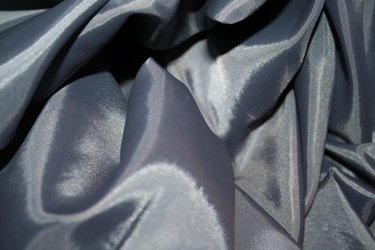
Drawing fluid is a commercial product that artists use when creating silk screens. Silk screens operate like stencils, allowing ink to pass through a design and blocking it from passing through elsewhere. Drawing fluid serves as a resist to block the ink. The artist uses a brush to paint it on a silk or nylon screen all around their design. Homemade drawing fluid may be made from white glue, acrylic, or any other viscous liquid that hardens over time.
Commercial Drawing Fluid
Video of the Day
Commercial drawing fluid is available from select craft stores that sell screen printing supplies. It's a blue or green liquid that the artist paints onto their screen using a standard brush. A skilled artist can achieve a significant amount of detail using drawing fluid, but the result is not quite as exact as using emulsion.
Video of the Day
White Glue
White craft glue is one of the most commonly used substitutes for drawing fluid. It operates in much the same manner. The artist paints it over the screen using a brush and allows it to dry before using the screen for printing. However, because of the craft glue's coloring it is a good idea to add a dye or a little bit of paint to easily distinguish areas that have been painted.
Acrylic Paint
Water soluble and brightly colored, acrylic paint hardens into a plastic-like veneer when painted on silk. Acrylic paint works well because of the rich colors that are available, allowing the artist to tell where he has painted the screen more easily. Painting a screen with acrylic may require several coats to adequately block it off, particularly if it has been thinned with water.
Wax
It is also possible to use melted wax as a resist. Although not often used for silkscreening, it has a long history of use with batik designs. In batik, wax separates areas of painted color on textiles before being melted away. The drawback to using wax is that it requires heat and it may be hard to achieve significant detail. However, it works well for stylistic, faux-batik screen printing.
Drawing Fluid vs Emulsion
One of the other screen making methods is the use of a photosensitive emulsion. The artist coats the silk screen with it and places the design on top. Then the emulsion is exposed to light. When washed, the emulsion blocked from the light by the design is removed. Emulsion can achieve exacting detail, but it is much trickier to work with than drawing fluid and requires more time and trial and error.